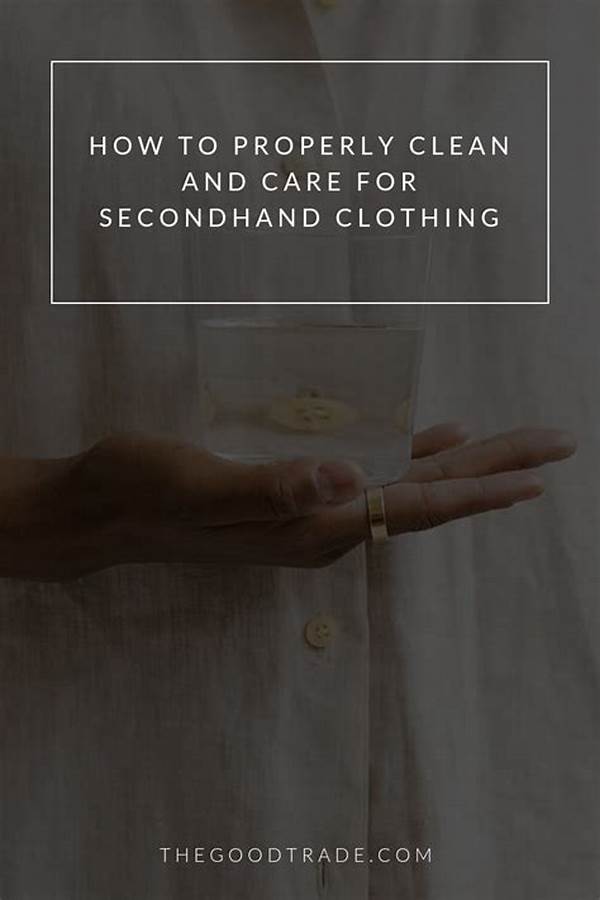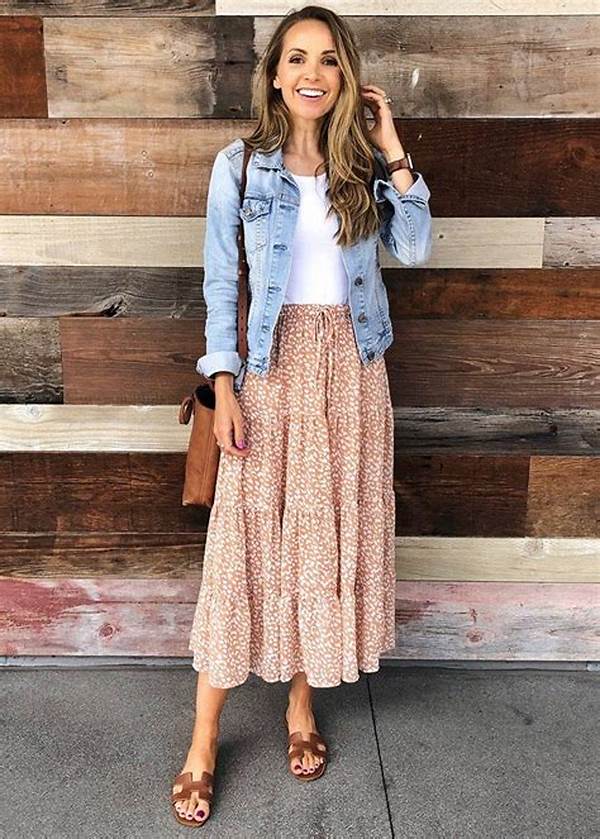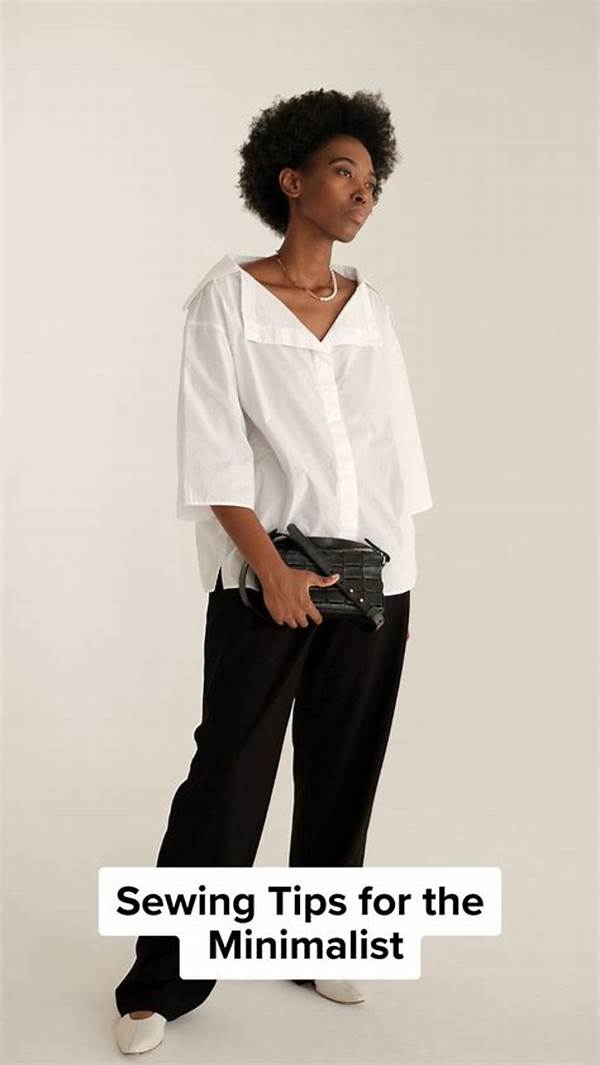In today’s world, where the mantra of recycling and sustainable living echoes louder than ever, the allure of secondhand clothes is irresistible. However, a crucial step stands between you and flaunting your thrift store finds: ensuring these garments are impeccably clean. Learning how to clean secondhand clothes properly not only prolongs their life but also guarantees your health and safety. Dive into this guide to unveil methods that transform preloved pieces into wardrobe gems.
Read Now : “compression Gear For Athletes”
Understanding the Importance of Proper Cleaning
When you buy secondhand clothes, you embrace a story. Each piece has traversed places, housed different homes, and rubbed shoulders with diverse fabrics. As appealing as these narratives might be, they also imply potential exposure to allergens, bacteria, and residues from previous owners. Knowing how to clean secondhand clothes properly becomes essential. This process not only involves basic washing but also includes sanitizing and deodorizing, eliminating unwanted particles and odors. By doing so, you afford yourself peace of mind, knowing your clothing is fresh, sanitized, and safe to wear. The confidence in wearing these well-loved pieces starts with meticulous cleaning, ensuring you’re not just inheriting style but cleanliness as well.
Essential Steps for Cleaning
1. Initial Inspection: Always start by inspecting the clothing under natural light. Look for stains, tears, or unusual odors that might need special attention before proceeding to clean.
2. Pre-Treatment of Stains: Apply an appropriate stain remover to tackle any persistent spots. Handling stains early ensures they don’t set during washing.
3. Choosing the Right Cleaning Products: Invest in eco-friendly detergent and consider adding vinegar or baking soda for natural sanitization, ensuring the garments are safe yet thoroughly cleaned.
4. Setting the Correct Washing Method: Be diligent about reading care labels to adjust the washing settings according to fabric type, ensuring you don’t damage delicate pieces.
5. Drying with Care: Opt for air drying when possible, as dryers can be rough on secondhand clothes, or if using a machine, ensure the setting matches the garment’s needs.
Digging Deeper into Cleaning Techniques
Understanding how to clean secondhand clothes properly extends beyond superficial washing. First, acknowledge the fabric type. Delicate materials may require hand washing or professional cleaning, while durable fabrics can handle more robust cleaning techniques. Consider using cold water as a universal option—it saves energy and is gentle on most fabrics. Employing natural cleaning agents, like vinegar, not only disinfects but also neutralizes odors. Proper garment care ensures longevity, maintains fabric integrity, and offers a hygienic barrier against past wear and tear.
Uncommon Cleaning Tips
1. Lemon Juice for Brightening: Apply lemon juice on whites for extra brightening.
2. Freezing for Pest Control: Place clothes in a freezer bag and freeze for 48 hours to kill any hidden pests.
3. Peroxide for Deep Stains: Use diluted hydrogen peroxide on tough stains for effective removal.
4. Essential Oils for Fragrance: Add a few drops of essential oil during the wash for a fresh and natural scent.
Read Now : Modern Men’s Suits In Navy And Red
5. Steam Cleaning: Utilize a steamer for an additional layer of sterilization that also removes wrinkles.
6. Dryer Balls for Softness: Use wool dryer balls to maintain the softness of your clothes.
7. Salt for Color Fixing: Soak new darker garments in saltwater to lock in colors and prevent bleeding.
8. Avoid Overloading the Washer: This ensures even washing and thorough cleaning.
9. Use of Mesh Laundry Bags: For delicate items, a mesh laundry bag can prevent snagging and damage.
10. Regularly Clean Your Washing Machine: Ensure your washing machine is hygienic and free from detergent residues that could affect load cleanliness.
Maintaining Quality Over Time
Mastering how to clean secondhand clothes properly does more than cleanse—it maintains and rejuvenates these treasured finds. Routinely verifying temperatures, spin speeds, and detergents align with fabric care labels assures the preservation of these garments. Additionally, airing out clothes post-wash can prevent mildew smell and mold growth, adding to their freshness. Similarly, for leather goods, using specialized leather conditions can prolong their life by keeping them supple and cracking-free. Regular upkeep not only delivers a visually refreshed outfit but also assures longevity and continued satisfaction from your thrifted buys.
Final Thought: The Art of Secondhand Care
There’s an art to understanding how to clean secondhand clothes properly—a blend of science, attentiveness and respect for the pieces that silently tell stories of the past. Each garment deserves meticulous care, rewarding you with unprecedented style and sustainable living. By ingraining these practices, you elevate secondhand shopping from a lifestyle choice to a cherished habit, enhancing your wardrobe while echoing environmental responsibility.
Conclusion: A Clean Wardrobe, A Clear Conscience
In conclusion, adopting practices on how to clean secondhand clothes properly symbolizes more than a task; it reflects a conscious choice towards sustainability and personal wellbeing. Each step—from selecting the right cleaning agents to abiding by proper drying methods—contributes to your clothing’s vitality. Embrace these practices not only for their immediate benefits but also for their long-lasting impact on both your wardrobe and the planet. As you integrate these habits into your routine, relish the reward of not just a clean wardrobe, but a clear conscience as well.




